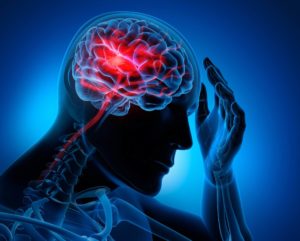Stimulants and depressants are two main classes of drugs that affect how a person behaves, feels, and thinks. Although they both affect the central nervous system, these drug classes are really at opposite ends of the spectrum. Both stimulants and depressants can become addictive, resulting in the need for treatment in a drug rehab center. Let’s take a closer look at these two types of drugs.
Stimulants: Characteristics, Availability, and Effects
 Stimulants are prescribed by medical doctors for the purpose of treating many conditions, including depression, narcolepsy, and ADHD. Known to increase focus, energy, and a feeling of well-being, legal pharmaceutical stimulants are distributed under several brand names, including Concerta, Vyvanse, Adderall, and Desoxyn.
Stimulants are prescribed by medical doctors for the purpose of treating many conditions, including depression, narcolepsy, and ADHD. Known to increase focus, energy, and a feeling of well-being, legal pharmaceutical stimulants are distributed under several brand names, including Concerta, Vyvanse, Adderall, and Desoxyn.
Previously, prescription stimulants were used in the treatment of a wider range of conditions. For example, they were used to treat obesity because these stimulants would reduce appetite. They were also prescribed for asthma, as they improved breathing by expanding the patient’s airways. However, following the realization that they had high misuse and addiction potential, the number of conditions for which they are prescribed has lessened considerably.
Non-Prescription Stimulants
Stimulants also exist in the form of certain items that can be purchased off the shelf. These include aspirin, caffeinated beverages, nicotine, and topical pain relief products.
Illegal Stimulants
Illegal stimulants are manufactured, packaged, and sold in the form of cocaine, crack cocaine, crystal meth, and party drugs like Ecstasy, “Molly,” and MDMA. These illegal stimulants are not only highly addictive but also highly dangerous to use. This is because they will often be diluted and “cut” with a toxic blend of stimulant and chemical substances.
Among the agents used to cut and dilute illegal stimulants are their non-prescription counterparts like aspirin and caffeine. However, dangerous chemicals like laundry detergent, cattle de-wormer, and boric acid are also used.
Effects of Stimulants on the Brain
When taken as prescribed, pharmaceutical stimulants have a mild to moderate effect on the prefrontal cortex of the brain. Both dopamine and norepinephrine are released. Dopamine, the “feel good” chemical, is what causes a feeling of euphoria, while norepinephrine causes blood pressure and heart rate to rise, constricts blood vessels, and opens breathing passages.
Dependence on pharmaceutical stimulants will involve taking an amount of the drug that will deliver either a stronger euphoria, do so for a longer period of time, or both.
The effect on the brain’s prefrontal cortex is the same with illegal stimulants but, because of the cutting and dilution agents used, the intensity of euphoria and energy felt when taking recreational drugs is far higher. As a result, a person’s brain becomes addicted far more quickly to the high they experience from a recreational drug.
As with pharmaceutical stimulants, over time, more of the drug is needed in order to meet the demand for a stronger high. Individuals will also increase their use in order to combat the symptoms of existing mental health disorders like depression.
Depressants: Characteristics, Availability, and Effects
Depressants are also commonly prescribed by medical doctors. Depressants slow brain activity, decrease blood pressure and alertness, slow respiration, and lower heart rate. As such, they’re used to treat anxiety, seizure disorders, and sleep disorders. They produce a calming effect and can also make the user drowsy. Depressants are also available under several brand names, which include Lunesta, Xanax, Nembutal, and Valium.
Depressants such as Valium are classed as benzodiazepines, which, when stopped, can cause the user to experience withdrawal symptoms. Non-benzodiazepine depressants such as Ambien can have fewer side effects and, therefore, are thought to have a lower dependence risk than benzodiazepine-containing products.
Finally, barbiturate-containing depressants like Mebaral have a higher risk of misuse, as well as a higher risk of overdose, which is why they are prescribed less frequently.
Non-Prescription Depressants
Alcohol is one of the most commonly known and misused non-prescription depressants. Solvents like glue and petroleum substances are also on this list, and opiates like morphine are also considered to be depressants. However, opiates are not to be confused with opioids, which are a different class of drug. Opiates are made from the poppy plant. Opioids are man-made pharmaceutical drugs that are chemically similar to their opiate counterparts.
Illegal Depressants
Illegal depressants include heroin and cannabis. Although not illegal by themselves, prescription depressants like Valium can have an illegal facet when a user purchases the substance on the street or commits a crime for the purpose of obtaining or selling the drug.
Heroin and cannabis can be either laced or cut with several dangerous substances. They can include cocaine, LSD, lead, and embalming fluid. As with stimulants, combining depressants with these cutting agents can result in a high that’s far more intense but also far more dangerous.
Effects of Depressants on the Brain
 Depressants slow brain activity by increasing the production and activity of gamma-aminobutyric acid in the brain. This chemical, also known as GABA, can cause sleepiness and clumsiness initially. With time, these symptoms diminish and disappear. However, those who take depressants over long periods may require more of them in order to achieve the same effect.
Depressants slow brain activity by increasing the production and activity of gamma-aminobutyric acid in the brain. This chemical, also known as GABA, can cause sleepiness and clumsiness initially. With time, these symptoms diminish and disappear. However, those who take depressants over long periods may require more of them in order to achieve the same effect.
Following the abrupt stoppage or reduction of depressant use, a person can experience withdrawal symptoms. As well, seizures are a possible harmful effect of stopping the taking of depressants. If a person stops taking a depressant containing barbiturates after a long period, they can experience withdrawal, but can also experience complications that may be life-threatening. These include overdose, coma, and death.
Drug Misuse Is Never Safe
When stimulant or depressant use becomes substance abuse disorders where more of the drugs are needed, many life-threatening medical conditions can be the result. In order to avoid these conditions, it’s extremely important to seek treatment as soon as possible.
Signs of stimulant dependence include:
- insomnia
- psychosis
- headache
- stomach upset
Signs of depressant dependence include:
- fatigue
- lightheadedness
- confusion
- dizziness
Other general signs of addiction include an inability to think about anything other than using, irritability, brain fog, explosive bouts of anger, and withdrawal from the people, places, and activities that one used to enjoy.
Treatment Options for Stimulant or Depressant Addiction
One who is addicted may engage in many risky behaviors that can affect them and those who love them. Physical problems arising out of addiction can include irreversible organ damage, cancer, and cardiac issues.
Addiction can also cause or co-exist with mental issues including depression, as well as emotional disorders and anxiety. Financial and legal trouble can arise when the loss of one’s job due to drug use occurs or when they engage in illegal activities to use or while using drugs.
The impact of addiction extends to all of a user’s relationships with family, friends, and romantic partners. A person may withdraw from these individuals in favor of using drugs, causing feelings of hurt, confusion, and abandonment in loved ones.
Getting Help
If you or a loved one is taking any stimulant or depressant—whether legal or illegal—and is experiencing the above symptoms, it’s critical to know about your treatment options. Professional help can ensure that you can stop usage in a safe manner with as little risk to your health as possible.
Addiction to any substance is a disease that, left untreated, will only progress and worsen. Treatment can interrupt the downward spiral of addiction, allowing a person to manage their withdrawal symptoms but also provide them with important skills to remain healthy and avoid relapse.
The intensive outpatient programs (IOPs) offered by BlueCrest Recovery Center are delivered in such a way as to continue to allow you to participate in work, school, and family life. Designed for those who have already completed inpatient treatment or do not require it, our outpatient detox programs require participation for three hours, three nights per week. Should inpatient services be needed, we can provide recommendations for locations where this treatment can be obtained.
If you’re ready to live a healthy and addiction-free life, BlueCrest Recovery Center can help. Contact us for more information about our intensive outpatient programs or request inpatient treatment information by calling 888.292.9652.
Medically Reviewed and Fact Checked By Dr. Thomaso Skorupski, D.O.














